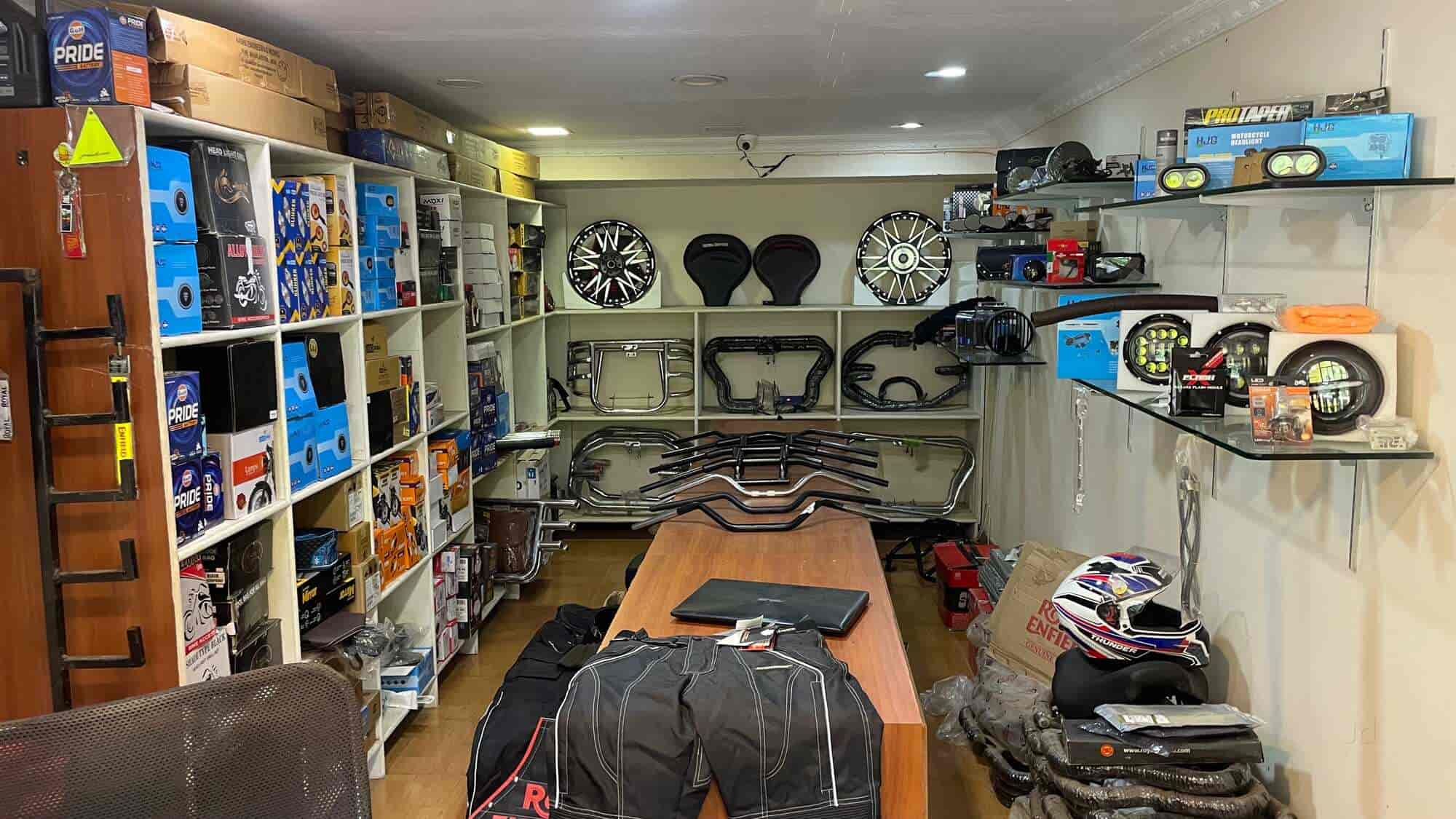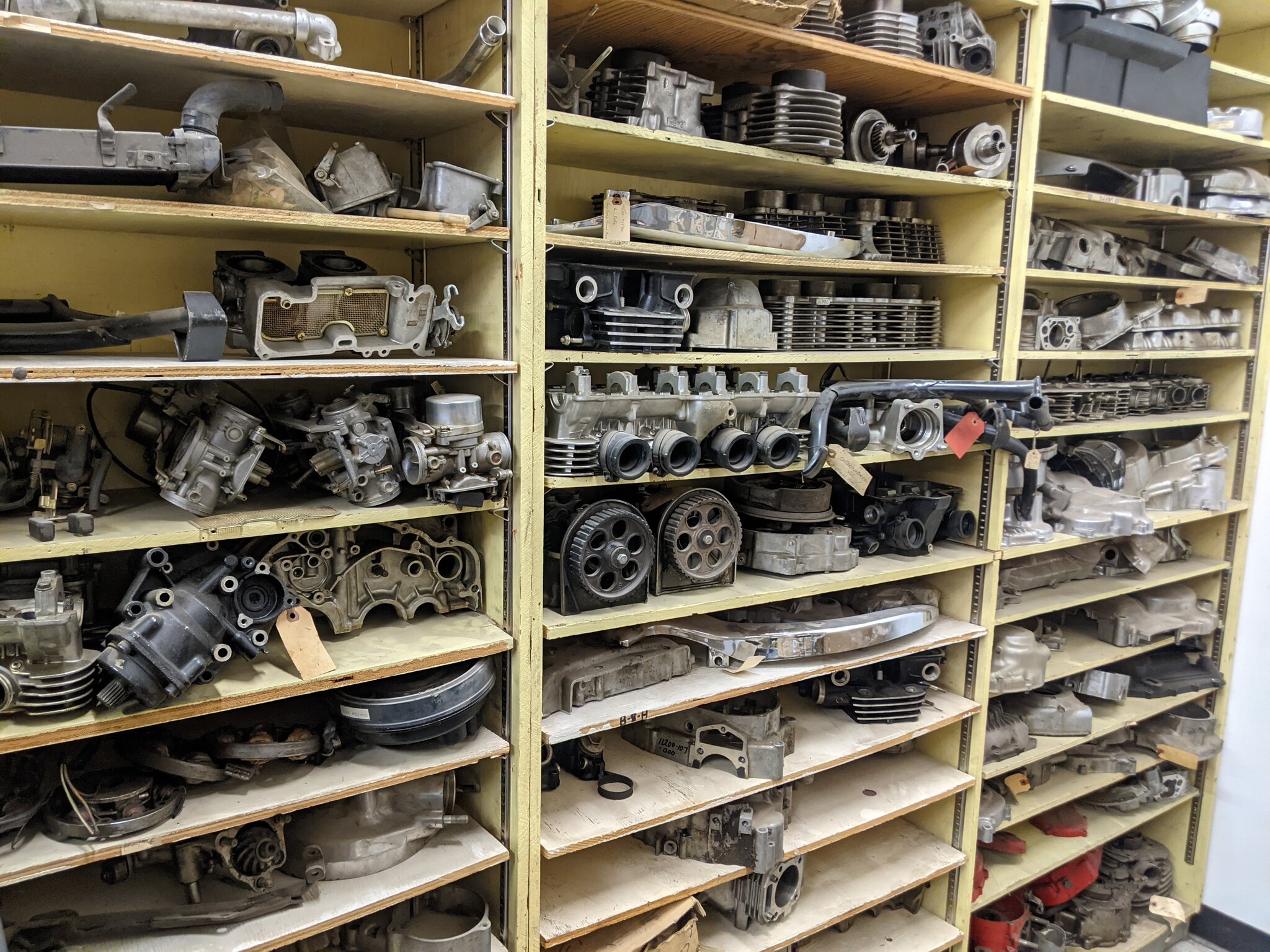Comprehending the Vital Parts of a Motorcycle: A Comprehensive Guide for Lovers
For bike enthusiasts looking to elevate their riding experience and ensure their bikes run smoothly, recognizing the crucial components of a bike is paramount. Each component, from the engine's complex functions to the crucial function of the braking mechanisms, not only influences performance yet additionally safety and security and comfort.
Engine Parts

The camshaft plays a crucial function in managing the timing of the engine's valves, making sure the exact opening and closing necessary for effective fuel and air intake, in addition to exhaust expulsion. This timing is essential to keeping ideal engine efficiency and performance. Furthermore, the carburetor or fuel shot system, relying on the bike version, is accountable for blending air with gas in the proper proportion for combustion.
The cooling system, either air or liquid-based, works to keep the engine's temperature level within functional limitations, preventing getting too hot and making certain long life - motox parts nz. Each component, carefully created and integrated, adds to the smooth operation of the engine, defining the bike's power result and overall performance
Transmission System
Integral to the motorbike's capability, the transmission system ensures reliable power transfer from the engine to the wheels. This system makes up numerous critical parts, consisting of the clutch, transmission, and last drive, each playing an essential function in converting the engine's power right into movement. The clutch, commonly run by a hand bar, offers to disengage the engine and engage from the transmission, enabling smooth gear changes and controlled velocity.
The transmission, usually referred to as the transmission appropriate, contains a set of gears that motorcyclists can manually move via to change the bike's speed and torque result. These equipments are arranged in a series that makes it possible for the bike to increase smoothly and maintain optimal engine performance across numerous speeds. Many bikes make use of a consecutive transmission, requiring the cyclist to move gears in an established order.
Braking Devices
While understanding the transmission system is crucial to using a motorcycle's power, just as crucial is the capacity to manage and stop that power properly, which is where braking devices enter into play. Brakes are crucial for security and performance, providing the biker with the essential control to browse various surfaces and problems. Normally, motorcycles include two types of stopping systems: disc brakes and drum brakes.
Disc brakes are much more common in contemporary bikes due to their remarkable efficiency. They contain a brake disc, caliper, and pads. When activated, the caliper squeezes the brake pads against the rotating disc, transforming kinetic energy into warmth, therefore slowing down the wheel. This system provides far better warmth dissipation, constant efficiency, and enhanced stopping power, especially in wet problems.
Conversely, drum brakes, though much less typical, are still discovered in some motorbikes. They work by pressing brake footwear versus the internal surface of a drum connected to the wheel. While typically less reliable in heat dissipation and stopping power, drum brakes are simpler and a lot more economical.
Comprehending these stopping systems' nuances permits bikers to keep their motorcycles appropriately and value the design that makes sure efficient and safe quiting.
Suspension and Guiding
Suspension and steering systems are important components that significantly affect a bike's handling and trip comfort. The shock absorber, including forks at the front and shock absorbers at the rear, absorbs road abnormalities, enhancing click here now stability and control. Front forks, upside down or commonly telescopic, compress and rebound to mitigate effects, while rear shock absorbers maintain tire call with the road, crucial for grip and safety.
Guiding, focused around the handlebars, connects the biker to the motorbike's directional control. The guiding head bearings guarantee smooth procedure, allowing specific ability to move. Appropriate positioning and maintenance of these bearings are important for predictable guiding action and decreasing biker exhaustion.
The suspension's adjustability is an additional important facet; preload, damping, and rebound settings allow modification to suit numerous riding conditions and styles. This flexibility is vital for enhancing performance, whether navigating city streets or taking on rugged routes. Developments like electronic shock absorber supply real-time changes, improving experience top quality across diverse terrains.

Electric Solutions
After making certain a smooth and controlled adventure through effective suspension and guiding systems, focus transforms to the electric systems, a pivotal aspect of modern-day motorcycles. These systems play an essential role not just in starting the engine however likewise in powering different components that boost the functionality and safety and security of the motorcycle.
At the heart of a motorcycle's electrical system is the battery, which shops electric power essential for beginning the engine and powering complementary systems - mx gear nz. The alternator or generator, combined with the rectifier-regulator, guarantees the battery remains billed while the motorbike functions, transforming power right into electrical energy and preserving voltage levels
The ignition system, one more important component, is in charge of sparking the air-fuel mixture in the engine's cylinders. Modern bikes usually utilize a digital ignition system, using greater effectiveness and integrity contrasted to standard systems.
Lighting systems, including headlights, tail lights, and indicators, are additionally vital, guaranteeing visibility and safety and security for the rider. Added electronic elements such as sensing units, control units, and displays contribute to sophisticated features custom dirt bike helmets like gas injection management, anti-lock stopping systems (ABS), and electronic dashboards, better boosting the riding experience.
Verdict
An extensive comprehension of a motorcycle's crucial parts, consisting of the engine, transmission system, braking mechanisms, suspension, steering, and electric systems, is crucial for fanatics aiming to enhance comfort, security, and performance. Proficiency of these components permits for informed decisions relating to upkeep and upgrades, eventually enhancing the riding experience. By incorporating this understanding, cyclists can ensure their motorbikes operate at peak performance and integrity, therefore optimizing both enjoyment and durability of their lorries.
For bike lovers looking to elevate their riding experience and ensure their bikes run smoothly, understanding the essential parts best aftermarket motorcycle fairings of a motorbike is vital.Important to the motorcycle's capability, the transmission system makes certain effective power transfer from the engine to the wheels.While recognizing the transmission system is essential to taking advantage of a bike's power, equally essential is the capacity to control and quit that power efficiently, which is where braking devices come right into play. Commonly, motorcycles include 2 kinds of braking systems: disc brakes and drum brakes.
A detailed understanding of a motorbike's crucial parts, consisting of the engine, transmission system, stopping mechanisms, suspension, guiding, and electrical systems, is vital for enthusiasts intending to optimize efficiency, safety and security, and comfort.